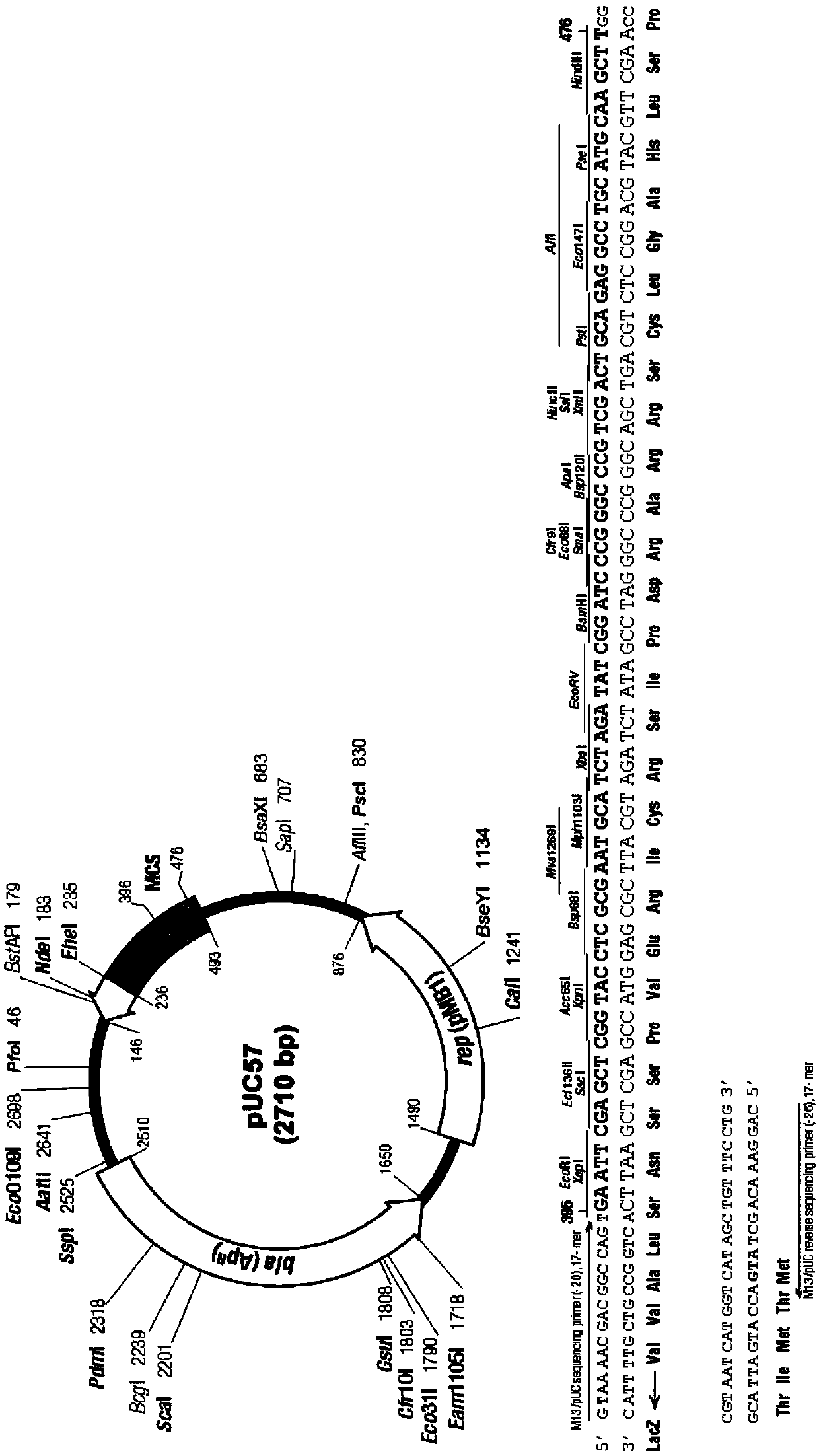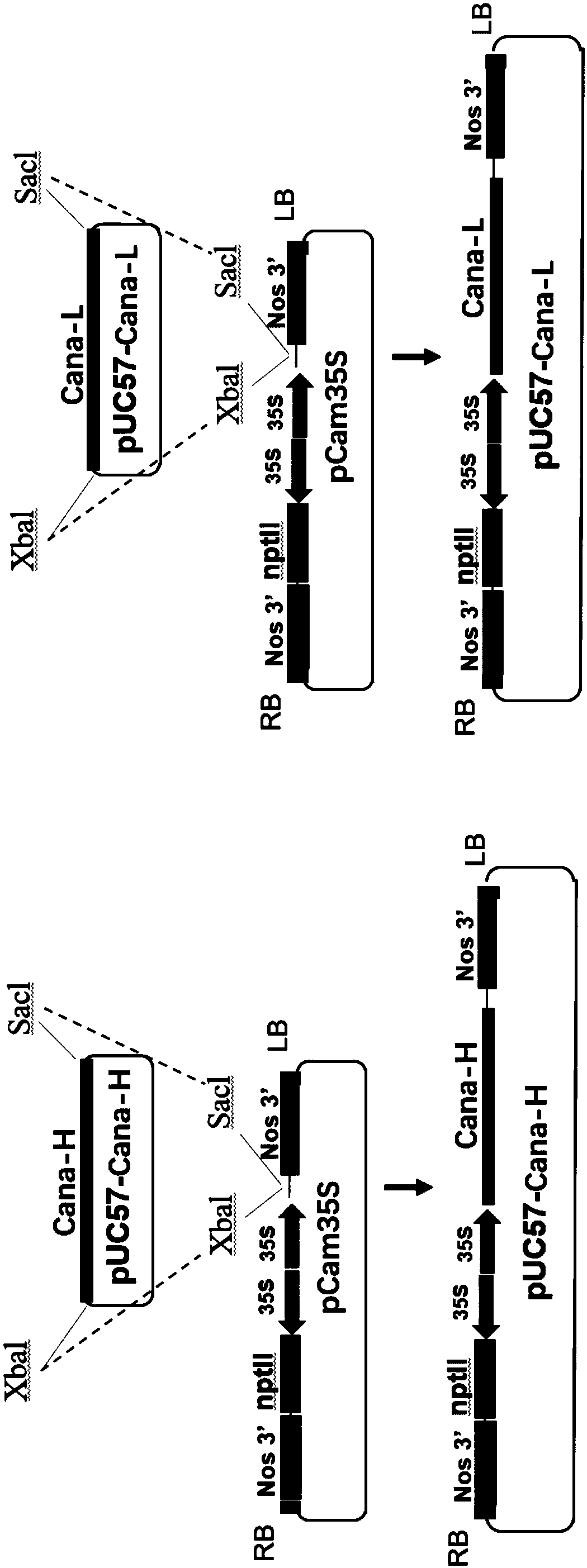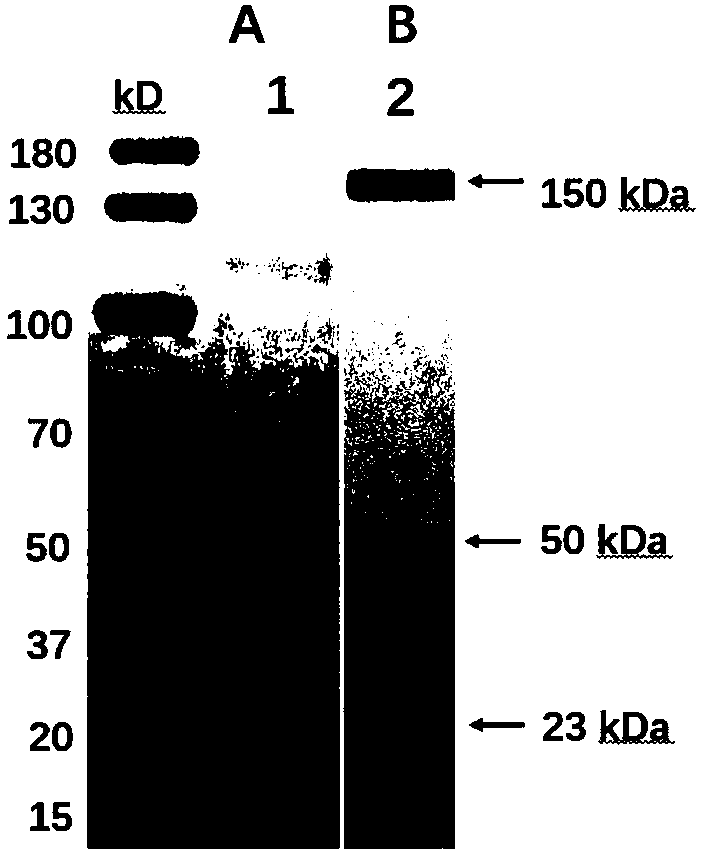Application of plants as hosts in expressing canakinumab
An expression vector and plant technology, applied in the application field of plants as hosts in the expression of kana antibody, can solve the problems of low production capacity of animal cells, complicated operation, high price, etc., and achieve the reduction of biosafety problems, simple purification, and production convenient effect
- Summary
- Abstract
- Description
- Claims
- Application Information
AI Technical Summary
Problems solved by technology
Method used
Image
Examples
Embodiment 1
[0050] The construction of embodiment 1 plant transient expression vector
[0051] In order to provide high-efficiency expression of foreign aid proteins in plants, the protein sequence reverse translation software (https: / / www.idtdna. com / CodonOpt) to optimize its codons to plant-preferred codons, which were synthesized by Kingsray Company (Nanjing, China). An Xbal restriction site was added to the 5' end of the optimized Kanal heavy chain sequence, and a SacI site was added to the 3' end. A Xbal restriction site was added to the 5' end of the kana light chain sequence, and a Sacl site was added to the 3' end. and cloned into the pUC57 vector by GenScript ( figure 1 ), generate pUC57-Cana-H, pUC57-Cana-L cloning vectors respectively. Gene fragments were isolated from cloning vectors by Xbal / Sacl, and cloned into binary plant vector, pCam35S, to generate plant expression vectors p35S-Cana-H, p35S-Cana-L, respectively. The two plant expression vectors were respectively tran...
Embodiment 2
[0053] Example 2 Agrobacterium-mediated vacuum infiltration
[0054] Mix the prepared Agrobacteria containing p35S-Cana-H and p35S-Cana-L in equal amounts until the O.D.600 is 0.5. The culture suspension was placed in a 2L beaker and placed in a desiccator. The lettuce kept in this laboratory was turned upside down (core up) and gently swirled in the bacterial suspension, and the desiccator was sealed. The vacuum pump (Welch Vacuum, Niles, IL, USA) was turned on to evacuate and the permeate was seen in the leaf tissue. Hold the pressure for 30-60 seconds. The system is quickly opened to release the pressure and allow permeate to seep into the spaces within the tissue. This process was repeated 2 to 3 times until the penetration of the permeate into the lettuce tissue was clearly visible. The lettuce tissue was then gently removed from the permeate and rinsed three times consecutively with distilled water before being transferred to a container covered with plastic film. T...
Embodiment 3
[0054] Mix the prepared Agrobacteria containing p35S-Cana-H and p35S-Cana-L in equal amounts until the O.D.600 is 0.5. The culture suspension was placed in a 2L beaker and placed in a desiccator. The lettuce kept in this laboratory was turned upside down (core up) and gently swirled in the bacterial suspension, and the desiccator was sealed. The vacuum pump (Welch Vacuum, Niles, IL, USA) was turned on to evacuate and the permeate was seen in the leaf tissue. Hold the pressure for 30-60 seconds. The system is quickly opened to release the pressure and allow permeate to seep into the spaces within the tissue. This process was repeated 2 to 3 times until the penetration of the permeate into the lettuce tissue was clearly visible. The lettuce tissue was then gently removed from the permeate and rinsed three times consecutively with distilled water before being transferred to a container covered with plastic film. The treated samples were kept in the dark for 4 days. Example 3...
PUM
 Login to View More
Login to View More Abstract
Description
Claims
Application Information
 Login to View More
Login to View More - R&D
- Intellectual Property
- Life Sciences
- Materials
- Tech Scout
- Unparalleled Data Quality
- Higher Quality Content
- 60% Fewer Hallucinations
Browse by: Latest US Patents, China's latest patents, Technical Efficacy Thesaurus, Application Domain, Technology Topic, Popular Technical Reports.
© 2025 PatSnap. All rights reserved.Legal|Privacy policy|Modern Slavery Act Transparency Statement|Sitemap|About US| Contact US: help@patsnap.com



